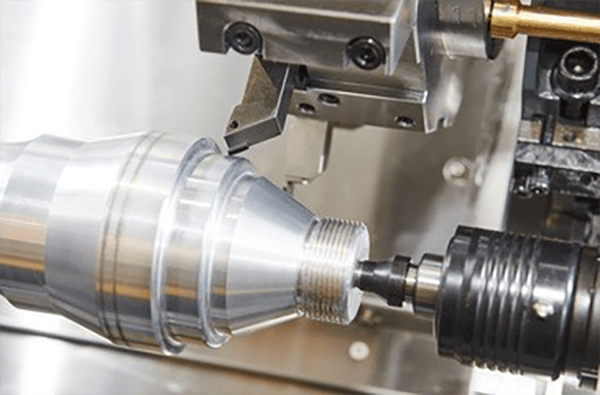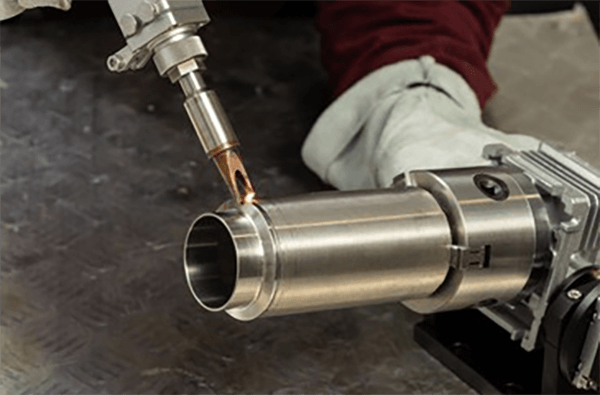
Achieving specified outer texture for a fabricated unit is critical.
- CAD annotations convey exact surface criteria for production
- Technical callouts use Ra, a measure of average irregularity, to quantify finish
- Decoding surface notes is important for ensuring components achieve required performance
- Clear finish specification affects lubrication behavior, sliding resistance, and lifespan
- Right interpretation of surface notes ensures attainment of the sought condition
CNC Machining — Precision Engineering Explained

Programmed machining operates as a leading production process by leveraging computer-aided programs machines execute intricate designs with remarkable accuracy.
- The technology facilitates production of complex parts across many materials
- Multifaceted CNC utility supports electronics, automotive, and aerospace production
- Programmed machining assures dependable consistency across manufacturing cycles
From small prototypes to large-volume runs CNC machining performs a central function in today's manufacturing landscape
CNC Spec Interpretation
Understanding equipment specifications can look intimidating initially
In contrast, measured learning and order help you traverse technical specifications
Begin by identifying the key parameters such as spindle speed feed rate accuracy work envelope and controller type
Every listed attribute influences the equipment’s operational capacity.
To illustrate, faster spindle rotation fits soft materials and quicker feed improves production rates.
Perceiving such relations guides selection of appropriate CNC equipment
Ensure you peruse vendor documentation exhaustively.
Producer documentation frequently delivers important notes and clarifies terminology
Understanding CNC Machines: A Complete Overview
CNC machines are specialized computer-controlled systems used in manufacturing for precise and automated fabrication of various materials They process programmed G-code to regulate toolpaths and actuator behavior.
- Examples of CNC types are vertical mills, CNC lathes, CNC routers, plasma cutters
- Production processes accommodate metal alloys, plastics, woods, and composite materials
- Likewise CNC solutions enable fast prototyping and small-lot production for enterprises and research labs
CNC Fundamentals and Principles
These tools showcase a blend of mechanical exactness and intelligent software command CNC platforms apply programming to fabricate both basic components and complex assemblies The fundamental principle behind CNC machines is the translation of digital designs into physical forms.
- Automated machine operation
- Programmatic production integration
It performs sequenced precise axis operations dictated by program Manufacturing staff set tooling parameters, oversee machining, and confirm quality outcomes.
Influence of Finish on CNC Operations
Delivering planned surface condition during machining is necessary It shapes both functional outcomes and outward appearance Base material, cutting conditions, and post-machining refinements govern texture.
Refined surfaces boost longevity; rough surfaces can diminish functional performance Code-driven machining enables selective tooling and techniques to attain required textures.
- As an example choosing diverse tool geometries |high-speed steels|speed settings to obtain particular finish
- Also surface treatments such as grinding and polishing can refine textures
Comprehending the connections between machining choices and texture secures better results.
CNC Basics — Operation and Uses
High-accuracy manufacturing via CNC employs programmed equipment to form components from varied materials They adhere to programmed code to reproduce complex geometries with repeatable accuracy Knowing programming basics and tool selection secures better machining outcomes
Industry applications include aircraft, automotive, medical, electronics, and beyond From turbine components to precision mold cores, CNC supports manufacture of complex parts
Surface Finish Standards for CNC Machining
Right specification of finish is necessary for CNC-produced parts It secures that the final item meets both functionality and looks Designers typically indicate finish using the Ra (roughness average) metric The value, shown in µm or inches, quantifies mean surface irregularity height.
Balance smoothness needs with intended application when designating finish

In practice smoother finishes help where exact fits and close tolerances are essential
Alternatively textured surfaces may aid applications needing traction or increased friction
Use explicit finish instructions on design documents to convey the surface requirement Provide the roughness average and detail supplemental processes or treatments needed.
Bear in mind accurate finish callouts drive better manufacturing results
CNC Machine Categories and Capabilities
There exists a diverse field of CNC machines built to serve many operational purposes They pair with CAD software to translate designs into cutting commands for precise fabrication.
- Milling machines are renowned for their ability to remove material from a workpiece shaping it into complex geometries
- Lathes excel at producing round parts such as shafts rods and bushings
- Laser, waterjet, and plasma technologies suit intricate shapes and delicate workpieces
Equipment choice hinges on material, design intricacy, and precision requirements Specialized CNC abilities fulfill industry requirements across sectors from transport to healthcare.
Realizing Superior Texture with CNC Machining
Securing excellent surface finish plays a key role in production and CNC methods enable that outcome With exact feed control spindle tuning and proper tool shapes machinists influence finish quality and minimize defects Plus durable cutting materials and appropriate coolant control boost finish quality Optimized cutting plans and meticulous setup procedures help achieve premium finishing.
Securing Surface Finish Through CNC Programming
Mastering surface finish during CNC programming is crucial for achieving desired quality outcomes Cutting parameter selection—feed, speed, tool geometry—controls surface finish Attentive parameter configuration alongside good coolant practice leads to superior surfaces.
- Continuous tool maintenance and define cnc machine oversight preserve high finish consistency Additionally routine tool checks and upkeep maintain consistent finish quality Moreover scheduled tool maintenance and inspection preserve surface performance
- To improve surface outcome account for material, roughness target, and application
- Virtual simulation provides a way to optimize feeds and speeds before cutting
- Additionally routine tool checks and upkeep maintain consistent finish quality
